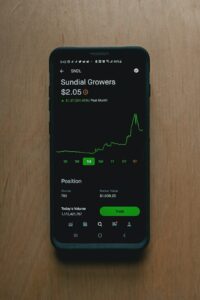The Basics of Forex Trading: A Free Guide for Beginners
Forex trading, also known as foreign exchange trading, is the buying and selling of currencies on the foreign exchange market. It is the largest and most liquid financial market in the world, with an average daily trading volume of $6.6 trillion. Forex trading offers tremendous opportunities for individuals to make money, but it also comes with its fair share of risks. In this guide, we will cover the basics of forex trading to help beginners get started in this exciting market.
Understanding Forex Trading
Forex trading involves the simultaneous buying of one currency and selling of another. Currencies are always traded in pairs, such as EUR/USD (Euro/US Dollar) or GBP/JPY (British Pound/Japanese Yen). The first currency in the pair is called the base currency, while the second currency is called the quote currency. The exchange rate between the two currencies determines how much of the quote currency is needed to buy one unit of the base currency.
For example, if the exchange rate for EUR/USD is 1.15, it means that one Euro can be exchanged for 1.15 US Dollars. If you believe that the Euro will strengthen against the US Dollar, you can buy Euros and sell US Dollars. If your prediction is correct and the Euro does strengthen, you can sell the Euros back for a profit.
Forex trading is conducted over-the-counter (OTC), which means that trades are executed electronically between participants without a central exchange. The forex market operates 24 hours a day, five days a week, allowing traders to participate at any time. This constant availability makes forex trading highly accessible to individuals from around the world.
Trading Platforms and Brokers
To start trading forex, you will need to open an account with a forex broker. A forex broker is a company that provides access to the forex market and executes trades on behalf of its clients. When choosing a broker, it is important to consider factors such as regulation, trading platform, spreads, and customer support.
Most brokers offer trading platforms that provide real-time quotes, charts, and tools for technical analysis. The most popular trading platform is MetaTrader 4 (MT4), which is known for its user-friendly interface and extensive range of features. MT4 allows traders to execute trades, set stop-loss and take-profit levels, and apply various technical indicators to analyze the market.
Demo accounts are often provided by brokers, allowing beginners to practice trading without risking real money. Demo accounts simulate real market conditions, providing valuable experience and helping traders develop their strategies before trading with real funds.
Fundamental and Technical Analysis
Forex traders use two main types of analysis to make trading decisions: fundamental analysis and technical analysis.
Fundamental analysis involves studying economic indicators, such as interest rates, employment reports, and inflation rates, to determine the overall health of a country’s economy and its currency. Traders use this information to predict future currency movements.
Technical analysis, on the other hand, involves studying historical price data and using various technical indicators to identify patterns and trends in the market. Traders use charts and indicators to identify entry and exit points for their trades.
Risk Management
Forex trading involves a certain level of risk, and it is essential for beginners to understand and manage these risks. One of the key principles of risk management is to never risk more than a small percentage of your trading capital on a single trade. This helps to protect your account from large losses and allows you to stay in the game even if you experience a series of losing trades.
Setting stop-loss orders is another crucial aspect of risk management. A stop-loss order is a predetermined level at which a trade will be automatically closed to limit potential losses. By setting a stop-loss order, you ensure that your losses are controlled and that you don’t lose more than you can afford.
Conclusion
Forex trading offers immense potential for individuals to make money, but it is not without its challenges. By understanding the basics of forex trading, choosing a reliable broker, and implementing sound risk management strategies, beginners can increase their chances of success in this exciting market. Remember, forex trading requires time, effort, and continuous learning to develop the necessary skills and knowledge. With dedication and perseverance, anyone can become a successful forex trader.





